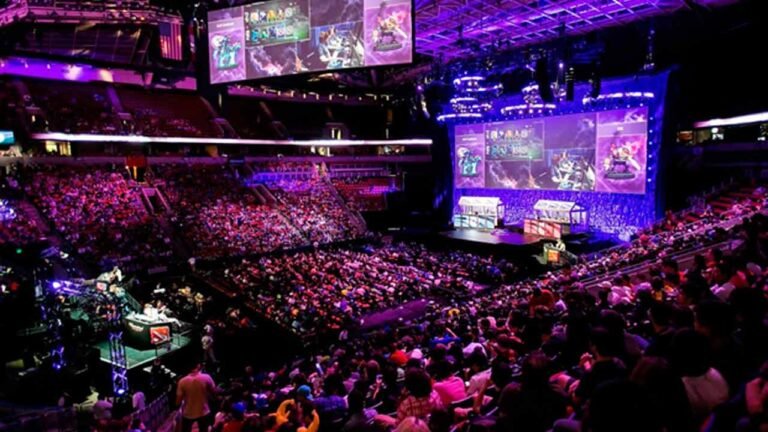
The Impact of Retirement on the Team
The retirement of a legendary football player can resonate deeply within a team, influencing its performance and camaraderie. One of the most immediate effects is the leadership void created by the absence of an experienced player who has often acted as a guiding force. This leader typically embodies not only skill but also serves as a source of inspiration for teammates, setting high standards of excellence during training sessions and matches. The loss of such an influential figure may initially disrupt team cohesion, forcing younger or less experienced players to step into roles they may not be fully prepared to undertake.
Moreover, the retirement signifies a loss of invaluable experience that the player brought to the field. Their strategic understanding of the game and ability to read opponents is often irreplaceable. This loss can impact the team’s tactical approach, necessitating adjustments to both game plans and on-the-field roles. Coaches may find themselves re-evaluating strategies, as they may need to reconfigure formations or playstyles that relied heavily on the unique contributions of the retired player.
The psychological effect of such a departure also cannot be overlooked. Players may struggle with feelings of insecurity or anxiety as they confront the changes in dynamics. This psychological shift can have profound implications for morale, possibly leading to decreased performance levels if not managed effectively. The atmosphere within the locker room may shift as players process the reality of their teammate’s absence, potentially creating an environment where uncertainty prevails.
Overall, the immediate impact of a legendary player’s retirement is multifaceted, touching on leadership, experience, psychological well-being, and cohesion within the team. As the team navigates this significant transition, it becomes imperative that both coaches and remaining players work collaboratively to foster a supportive environment and adapt to the new realities on and off the field.
Navigating the Transition: Filling the Void
The retirement of a legendary football player can undoubtedly leave a significant gap within a team, both on and off the pitch. To successfully navigate this transition, it is crucial for the coaching staff and management to implement strategic measures aimed at filling the void. One effective approach is evaluating the skills and potential of current squad members. By assessing players who could elevate their game to cover the tactical and emotional leadership roles previously held by the retiring legend, teams can facilitate smoother transitions without immediately resorting to external acquisitions.
Moreover, scouting potential transfers becomes essential. Identifying players who can bring not only technical skills but also similar leadership qualities is vital. Clubs should prioritize talents that fit seamlessly into the team’s existing dynamics, thereby maintaining cohesion and performance levels. A well-considered transfer policy, guided by the philosophy and playing style of the club, can mitigate the challenges posed by the departure of a key player.
Another avenue worth exploring is the nurturing of young talent from the academy. By providing opportunities for promising youth players, teams can create a pipeline of fresh talent eager to prove themselves in a competitive atmosphere. Historical case studies illustrate the success of this strategy — clubs like FC Barcelona and Manchester United have effectively integrated academy graduates into their first teams, thereby reducing the impact of key players leaving the squad.
In conclusion, addressing the retirement of a legendary player involves a multifaceted strategy. By evaluating current players, scouting new talents, and promoting youth development, teams can craft a comprehensive plan for transition. These strategies not only help fill the immediate void but also lay a foundation for sustained success in the future.
Future Prospects: Building a New Identity
The departure of a legendary football player often marks a pivotal juncture for a team, prompting an essential redefinition of its identity. As the team moves forward, establishing a new style of play becomes vital. This transformation necessitates not only the incorporation of fresh strategies but also an emphasis on adaptability and resilience. The coaching staff must assess the strengths of the remaining players, re-evaluating their capabilities to forge a collective identity that aligns with the evolving dynamics of the league.
Teamwork will play a quintessential role in this transition. The emphasis on collaboration can help bridge the gap left by the departed star, fostering a sense of unity and purpose among teammates. By reinforcing communication on and off the pitch, players can develop trust, which is essential to executing the new tactical blueprint. Drills and practice sessions focused on cooperative play will enhance player synergy, enabling the team to maintain competitive performance while embracing this new identity.
Moreover, fan expectations and community engagement are expected to evolve in the light of such an impactful change. Fans who once cherished the charisma and skill of the legendary player may experience a blend of nostalgia and curiosity as they witness the development of a new team ethos. The management should actively engage supporters by sharing insights into the team’s strategic vision, thus fostering a sense of inclusion and belonging. Initiatives like fan forums and community outreach programs will not only enhance loyalty but also invite diverse perspectives on the team’s future direction.
In conclusion, by prioritizing the establishment of a new style of play, cultivating teamwork, and engaging with fans, the team can successfully navigate the transition and build a robust identity, paving the way for future success in the post-legend era.
Coping with Change: Fan Reactions and Expectations
The retirement of a legendary football player undoubtedly marks a significant moment in the hearts of fans and supporters. For many, the player is not just an athlete but a symbol of dedication and passion for the sport. This emotional connection often leads to mixed reactions from fans as they process the implications of this milestone for the team’s future. Supporters may feel a deep sense of loss as they reminisce about unforgettable moments and achievements associated with the player’s tenure.
As fans grapple with this change, they often express a blend of nostalgia and anxiety regarding the team’s performance. The departure of a key player can evoke concerns about the team’s capability to compete at previous levels, prompting supporters to reassess their expectations for the upcoming seasons. Some fans might hold onto hope, believing that the organization will step up to fill the gap left by the retiring player, while others may fear a decline in performance and morale.
In such transitional phases, maintaining fandom loyalty is paramount for the club. Effective communication and engagement strategies can facilitate a smoother adaptation process. Clubs can capitalize on the emotional connection fans have with the player by highlighting their legacy through tribute events, social media campaigns, or merchandise that celebrates their contributions. Moreover, fostering a narrative that emphasizes the potential of emerging talent and the long-term vision for the team can help reframe public perception and maintain fan enthusiasm.
Ultimately, as supporters navigate their emotions, it is crucial for the club to remain attuned to the sentiment of its fan base. Addressing their concerns, celebrating the team’s history, and fostering a sense of belonging can help alleviate anxieties surrounding the change, ensuring a loyal and engaged community for years to come.



